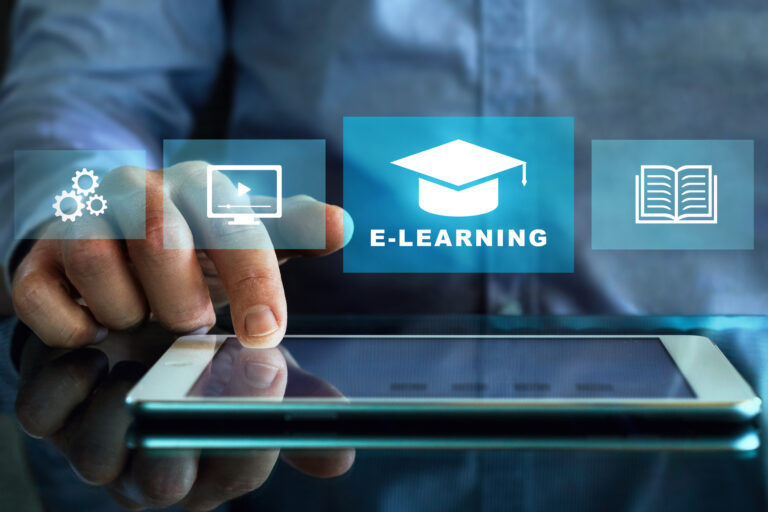In today’s digital age, technology has become an integral part of our lives, transforming the way we work, communicate, and learn. In the field of education, technology has revolutionised the teaching and learning process, providing teachers with a wide range of tools to enhance student engagement and improve academic performance.
In this blog post, we will explore the world of educational technology and its impact on education. We will delve into the importance of technology in the classroom and discuss how teachers can effectively integrate tech tools into their lesson plans. Additionally, we will review popular tech tools that are specifically designed to meet the needs of teachers and students.
Understanding the importance of technology in education is crucial in today’s rapidly evolving world. Technology not only equips students with essential digital skills but also facilitates personalised learning experiences. By incorporating tech tools into their teaching practices, teachers can create a dynamic and interactive classroom environment that caters to the diverse needs and learning styles of their students.
To effectively use tech tools in the classroom, teachers need to first identify the educational needs of their students. This involves understanding their strengths, weaknesses, and individual learning preferences. By doing so, teachers can select the right tech tools that align with their students’ needs and curriculum objectives.
Choosing the right tech tools can be overwhelming, given the vast array of options available. In this blog post, we will explore various categories of tech tools, such as educational apps and websites, interactive whiteboards and smartboards, virtual reality and augmented reality tools, and online assessment and feedback tools. Each category offers unique benefits and features that can enhance student learning and engagement.
Implementing tech tools in lesson plans requires careful planning and integration. Teachers need to consider how these tools will be used to support their instructional goals and promote student learning outcomes. We will discuss strategies and best practices for seamlessly integrating tech tools into lesson plans, ensuring a smooth and effective learning experience for both teachers and students.
While the use of tech tools in the classroom offers numerous benefits, it also comes with its fair share of challenges. Overcoming technical difficulties, addressing privacy and security concerns, providing adequate training and professional development for teachers, and ensuring inclusive access to technology are some of the challenges that need to be tackled. We will explore these challenges in detail and provide practical solutions to overcome them.
Measuring the impact of tech tools on student learning is vital to assess their effectiveness and make informed decisions. We will discuss various methods for measuring the impact of tech tools, including assessing student engagement, evaluating academic performance, soliciting student and parent feedback, and analysing the long-term effects on learning.
In conclusion, educational technology has the power to transform the way we teach and learn. By embracing tech tools and effectively integrating them into the classroom, teachers can create engaging and personalized learning experiences that maximize student potential. In this blog post, we will provide valuable insights, recommendations, and reviews of popular tech tools for teachers, helping them enhance learning and prepare students for success in the digital age. So, stay tuned and get ready to embark on an exciting journey into the world of educational technology!
Understanding the Importance of Technology in Education
Technology has become an essential component of modern education, revolutionizing the way teachers teach and students learn. Understanding the importance of technology in education is crucial for educators to adapt to the evolving needs of their students and prepare them for success in the digital age.
Advantages of Using Technology in Education
- Enhanced Engagement: Technology offers interactive and multimedia-rich learning experiences that captivate students’ attention and foster active participation in the learning process. It allows for dynamic and hands-on activities, making learning more engaging and enjoyable.
- Personalised Learning: Technology enables personalised learning experiences tailored to the individual needs and learning styles of students. Adaptive learning software and online resources can provide customised content and feedback, allowing students to progress at their own pace.
- Access to Information and Resources: With technology, students have instant access to a vast amount of information and educational resources. Online databases, e-books, educational websites, and multimedia platforms provide a wealth of knowledge that goes beyond traditional classroom resources.
- Collaborative Learning: Technology facilitates collaboration among students and promotes teamwork. Online discussion forums, collaborative documents, and virtual group projects foster communication and cooperation, enhancing critical thinking and problem-solving skills.
- Real-World Connections: Technology allows students to connect with experts, professionals, and peers from around the world, breaking down geographical barriers. Virtual field trips, video conferences, and online collaborations enable students to gain real-world insights and perspectives.
- Preparation for the Future: In today’s digital society, proficiency in technology is essential for future success. By integrating technology into education, students develop digital literacy and acquire skills that are highly sought after in the workforce.
Impact on Teaching Practices
- Differentiated Instruction: Technology enables teachers to cater to the diverse learning needs of their students through adaptive learning platforms and digital resources. They can provide individualized support, track progress, and adjust instruction accordingly.
- Efficient Classroom Management: Technology streamlines administrative tasks such as attendance tracking, grading, and record-keeping, allowing teachers to focus more time on instruction and student engagement.
- Professional Development: Technology provides opportunities for teachers to enhance their professional development. Online courses, webinars, and educational conferences accessible through technology enable teachers to stay updated with the latest pedagogical approaches and technological advancements.
- Data-Driven Decision Making: Technology offers tools for collecting and analysing student data, enabling teachers to make informed decisions about instructional strategies, interventions, and curriculum modifications.
- Global Collaboration: Technology opens up avenues for teachers to connect and collaborate with educators worldwide, sharing best practices, resources, and ideas. Professional learning networks and online communities provide a platform for continuous growth and collaboration.
Understanding the importance of technology in education empowers teachers to harness its potential for creating engaging, personalised, and effective learning experiences. By embracing technology in the classroom, educators can equip students with the skills and knowledge necessary to thrive in a technology-driven society.
How to Effectively Use Tech Tools in the Classroom
Integrating tech tools into the classroom requires careful planning and thoughtful implementation. In this section, we will explore a step-by-step approach to effectively use tech tools, ensuring that they enhance learning and engage students.
1. Identifying Educational Needs
Before integrating tech tools, it is crucial to identify the specific educational needs of your students. Consider the learning objectives, curriculum standards, and the unique characteristics of your students. Ask yourself:
- What are the areas where tech tools can support and enhance learning?
- Are there any specific challenges or gaps in student understanding that tech tools can address?
- How can tech tools cater to different learning styles and abilities in the classroom?
By understanding the specific educational needs, you can select the appropriate tech tools that align with your goals and student requirements.
2. Choosing the Right Tech Tools
With a plethora of tech tools available, it is essential to choose ones that are suitable for your teaching context and student needs. Consider the following factors when selecting tech tools:
- Alignment with Learning Objectives: Ensure that the tech tools align with your learning objectives and curriculum standards. Look for tools that address specific content areas or skills you want to enhance.
- User-Friendliness: Choose tools that are intuitive and easy to use. Consider the level of technical expertise required for both teachers and students to use the tool effectively.
- Compatibility and Accessibility: Check the compatibility of the tech tools with the devices and software available in your classroom. Also, consider accessibility features to ensure that all students can actively participate.
- Reviews and Recommendations: Read reviews, seek recommendations from trusted sources, and explore online forums to gather insights from other educators who have used the tech tools.
3. Implementing Tech Tools in Lesson Plans
Once you have selected the tech tools, it’s time to integrate them into your lesson plans. Here are some steps to effectively implement tech tools in your teaching:
- Determine the Learning Activities: Identify the specific learning activities in which the tech tools will be incorporated. Consider how the tools will enhance student engagement, provide interactive experiences, or facilitate collaborative work.
- Plan for Instructional Time: Allocate sufficient time for introducing and familiarizing students with the tech tools. Provide clear instructions and expectations for their use during the lesson.
- Scaffold Learning: Gradually introduce and scaffold the use of tech tools to ensure that students understand their purpose and functionality. Consider providing guided practice and support as needed.
- Monitor and Assess: Continuously monitor students’ progress and provide timely feedback. Use formative assessments or check-ins to gauge their understanding and adjust instruction accordingly.
4. Enhancing Student Learning and Engagement
To maximize the impact of tech tools on student learning, consider the following strategies:
- Differentiate Instruction: Use tech tools to provide personalised learning experiences that cater to individual student needs. Adapt the content, pace, or level of difficulty to accommodate diverse learners.
- Foster Collaboration: Utilise tech tools that promote collaboration and teamwork among students. Encourage them to work together on projects, share ideas, and provide feedback to their peers.
- Provide Opportunities for Creativity: Embrace tech tools that allow students to express their creativity, such as multimedia creation tools or coding platforms. Encourage them to think critically, problem-solve, and innovate.
- Reflect and Iterate: Regularly reflect on the effectiveness of the tech tools in enhancing student learning. Seek feedback from students and make necessary adjustments to optimize their impact.
5. Professional Development and Support
To effectively use tech tools, teachers need continuous professional development and support. Consider the following avenues for growth:
- Attend Workshops and Training Sessions: Participate in workshops or training sessions that focus on integrating tech tools in the classroom. Learn from experts, collaborate with peers, and explore new teaching strategies.
- Join Professional Learning Networks: Engage in professional learning networks (PLNs) to connect with like-minded educators. Share ideas, and best practices, and troubleshoot challenges related to tech integration.
- Seek Technical Support: Familiarize yourself with technical support resources, whether from your school, district, or the tech tool provider. Reach out for assistance when encountering technical difficulties or questions.
By following these steps and strategies, teachers can effectively use tech tools in the classroom, creating a dynamic and engaging learning environment that fosters student growth and achievement.
Review of Popular Tech Tools for Teachers
In this section, we will explore and review a range of popular tech tools that have been specifically designed to meet the needs of teachers. These tools offer innovative features and functionalities that can enhance teaching, student engagement, and overall learning outcomes. Let’s dive into the review of these tech tools:
1. Educational Apps and Websites
- Khan Academy: Khan Academy provides a vast library of video lessons, practice exercises, and quizzes across various subjects and grade levels. It offers personalized learning experiences and tracks student progress.
- Quizlet: Quizlet is a versatile platform that allows teachers to create flashcards, quizzes, and study sets. It supports different learning modes, including games and collaborative study sessions.
- Edmodo: Edmodo is a secure social learning platform that enables teachers to create a virtual classroom. It facilitates communication, collaboration, and assignment management, while also providing a space for students to engage in discussions.
- Seesaw: Seesaw is a digital portfolio platform that enables students to showcase their work, receive feedback, and collaborate with peers. Teachers can easily assess and provide personalized feedback on student assignments.
2. Interactive Whiteboards and Smartboards
- SMART Board: SMART Board is a popular interactive whiteboard that enables teachers to create interactive lessons using digital ink, multimedia content, and educational software. It promotes student engagement and collaboration.
- Promethean ActivPanel: The Promethean ActivPanel is a touch-enabled interactive display that enhances classroom engagement. It offers interactive tools, teacher-friendly software, and multimedia capabilities.
- Google Jamboard: Google Jamboard is a collaborative digital whiteboard that allows teachers and students to sketch, annotate, and work together in real time. It can be accessed from various devices and integrates with Google Workspace.
3. Virtual Reality and Augmented Reality Tools
- Nearpod VR: Nearpod VR provides immersive virtual reality experiences for students. It offers a library of VR lessons across various subjects, allowing students to explore different environments and enhance their understanding.
- Merge Cube: Merge Cube is an augmented reality tool that transforms the physical cube into a virtual object. Students can interact with the cube using a smartphone or tablet, exploring various educational experiences.
- Google Expeditions: Google Expeditions offers virtual field trips to locations worldwide, providing students with immersive and educational experiences. It allows teachers to guide and engage students during the virtual exploration.
4. Online Assessment and Feedback Tools
- Kahoot: Kahoot is a game-based learning platform that enables teachers to create quizzes, surveys, and discussions. It promotes student engagement through interactive and competitive learning experiences.
- Formative: Formative is an online assessment tool that allows teachers to create and distribute quizzes, assignments, and exit tickets. It provides real-time feedback and data for teachers to track student progress.
- Flipgrid: Flipgrid is a video discussion platform that encourages student voice and collaboration. Teachers can pose questions or topics, and students respond with short video clips, fostering meaningful conversations.
This is just a sampling of the many tech tools available for teachers. Each tool offers unique features and benefits, so it is essential to explore and experiment with different tools to find the ones that best fit your teaching style and student needs. Remember to consider factors such as ease of use, compatibility with your devices, and the specific learning outcomes you aim to achieve.
Challenges and Solutions in Implementing Tech Tools
Implementing tech tools in the classroom comes with its fair share of challenges. In this section, we will explore the common challenges that teachers may face and provide practical solutions to overcome them. By being aware of these challenges and having strategies in place, teachers can ensure a smooth and successful integration of tech tools in their teaching practices.
1. Overcoming Technical Difficulties
- Limited Access to Devices: Not all students may have access to personal devices or the necessary technology in their homes. This can pose challenges in implementing tech tools consistently. Solutions include seeking funding for classroom devices, utilizing school computer labs, or implementing a BYOD (Bring Your Device) policy.
- Connectivity Issues: Unreliable internet connectivity or limited bandwidth can hinder the effective use of tech tools. Teachers can address this by pre-downloading resources, creating offline versions of activities, or using offline alternatives when necessary.
- Technical Support: Teachers may encounter technical difficulties in using and troubleshooting tech tools. Establishing a support system within the school, seeking assistance from IT staff, or engaging with online communities can help overcome these challenges.
2. Addressing Privacy and Security Concerns
- Student Data Privacy: Protecting student data is crucial. Teachers should ensure they are using tech tools that comply with privacy regulations, obtain necessary consent from parents/guardians, and educate students about online safety and responsible digital citizenship.
- Cybersecurity: With the increasing use of technology, the risk of cyber threats also grows. Teachers should stay updated on cybersecurity best practices, teach students about online safety, and utilise secure platforms and tools.
3. Training and Professional Development for Teachers
- Lack of Technological Skills: Some teachers may feel inadequate or lack confidence in using tech tools. Schools can provide professional development opportunities, workshops, and training sessions to enhance teachers’ technological skills and knowledge.
- Keeping Up with Technological Advancements: Technology is ever-evolving, making it challenging for teachers to stay updated. Encouraging continuous professional development, fostering collaboration among teachers, and sharing resources can help teachers keep pace with advancements.
4. Inclusive Access to Technology
- Equity and Accessibility: Ensuring that all students have equal access to technology can be a challenge. Schools can address this by providing devices and internet access for students in need, offering alternative offline activities, and promoting collaboration and sharing among students.
- Different Learning Needs: Tech tools may not cater to the diverse learning needs of all students. Teachers should select tools that offer flexibility, accommodate different learning styles, and provide multiple means of representation and engagement.
By proactively addressing these challenges and implementing practical solutions, teachers can overcome barriers and successfully integrate tech tools into their classrooms. It is important to have a growth mindset, be open to learning, and continually adapt strategies to meet the evolving needs of students and the technological landscape.
Measuring the Impact of Tech Tools on Student Learning
Measuring the impact of tech tools on student learning is essential to assess their effectiveness and make informed decisions. In this section, we will explore various methods and considerations for measuring the impact of tech tools on student learning outcomes.
1. Assessing Student Engagement
- Observations: Teachers can observe student engagement during tech tool activities, noting their level of participation, interaction, and enthusiasm.
- Surveys and Questionnaires: Administering surveys or questionnaires to gather student feedback on their level of engagement, interest, and satisfaction with the tech tools.
- Student Reflections: Encouraging students to reflect on their learning experiences with tech tools through written reflections, discussions, or multimedia presentations.
2. Evaluating Academic Performance
- Formative Assessments: Using formative assessments, such as quizzes, assignments, or project-based assessments, to gauge student understanding and progress before, during, and after using tech tools.
- Summative Assessments: Comparing student performance on summative assessments, such as tests or projects, before and after the implementation of tech tools to determine any improvements in learning outcomes.
- Data Analysis: Analysing data generated by tech tools, such as progress reports, learning analytics, or usage statistics, to gain insights into student performance and identify areas of growth.
3. Soliciting Student and Parent Feedback
- Student Surveys and Interviews: Conduct surveys or interviews to gather feedback from students about their perceptions of the impact of tech tools on their learning, engagement, and overall educational experience.
- Parent Surveys or Communication: Engaging parents in the assessment process by seeking their input through surveys or maintaining open lines of communication to understand their observations and feedback.
4. Long-Term Effects of Tech Tools on Learning
- Tracking Academic Progress: Monitoring student academic progress over an extended period, considering factors such as long-term retention of knowledge, growth in critical thinking skills, and application of learning in real-world contexts.
- Alumni Tracking: Following up with former students to assess the long-term impact of tech tools on their academic and professional journeys.
- Research Studies: Exploring existing research studies or conducting longitudinal research to examine the long-term effects of tech tools on student learning outcomes.
It is important to note that measuring the impact of tech tools on student learning is not limited to quantitative data alone. Qualitative data, such as anecdotal evidence, student reflections, and feedback, can provide valuable insights into the impact of tech tools on student engagement and learning experiences.
By utilizing a combination of assessment methods, educators can gain a comprehensive understanding of the impact of tech tools on student learning and make informed decisions about their integration into future teaching practices. Continuous monitoring, evaluation, and adaptation are key to optimizing the benefits of tech tools in enhancing student learning outcomes.
Related posts:
 Meeting the Needs of Every Student: Implementing Trauma-Informed Practices in the Classroom
Meeting the Needs of Every Student: Implementing Trauma-Informed Practices in the Classroom
 Empowering Students’ Voices: Promoting Agency and Resilience in Trauma-Informed Classrooms
Empowering Students’ Voices: Promoting Agency and Resilience in Trauma-Informed Classrooms
 Addressing Behaviour through a Trauma-Informed Lens: Strategies for Cultivating Positive Classroom Culture
Addressing Behaviour through a Trauma-Informed Lens: Strategies for Cultivating Positive Classroom Culture
 Building Trust and Connection: The Role of Relationships in Trauma-Informed Teaching
Building Trust and Connection: The Role of Relationships in Trauma-Informed Teaching



